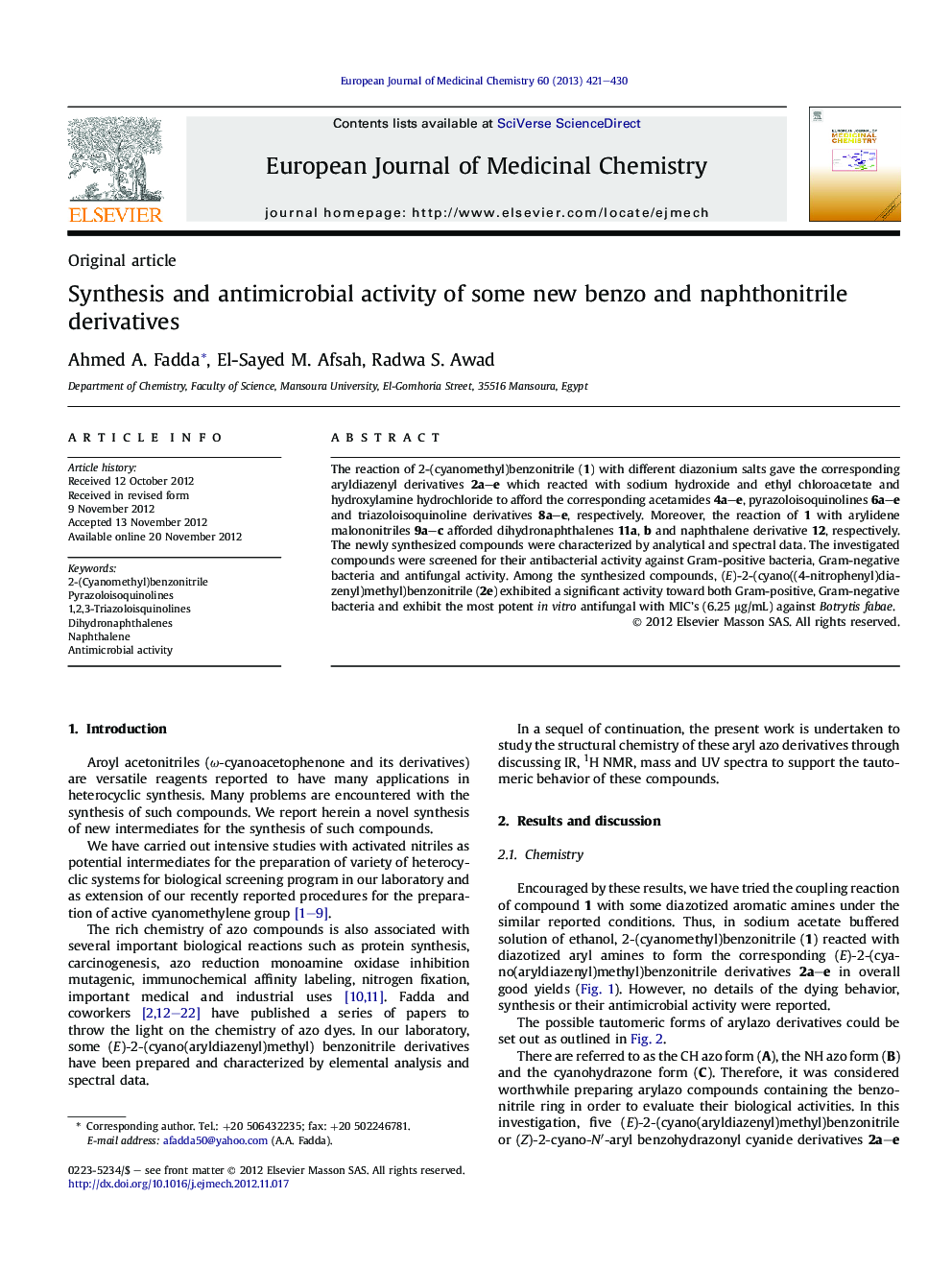| Article ID | Journal | Published Year | Pages | File Type |
|---|---|---|---|---|
| 1399288 | European Journal of Medicinal Chemistry | 2013 | 10 Pages |
The reaction of 2-(cyanomethyl)benzonitrile (1) with different diazonium salts gave the corresponding aryldiazenyl derivatives 2a–e which reacted with sodium hydroxide and ethyl chloroacetate and hydroxylamine hydrochloride to afford the corresponding acetamides 4a–e, pyrazoloisoquinolines 6a–e and triazoloisoquinoline derivatives 8a–e, respectively. Moreover, the reaction of 1 with arylidene malononitriles 9a–c afforded dihydronaphthalenes 11a, b and naphthalene derivative 12, respectively. The newly synthesized compounds were characterized by analytical and spectral data. The investigated compounds were screened for their antibacterial activity against Gram-positive bacteria, Gram-negative bacteria and antifungal activity. Among the synthesized compounds, (E)-2-(cyano((4-nitrophenyl)diazenyl)methyl)benzonitrile (2e) exhibited a significant activity toward both Gram-positive, Gram-negative bacteria and exhibit the most potent in vitro antifungal with MIC's (6.25 μg/mL) against Botrytis fabae.
Graphical abstractNovel series of azodyes, pyrazoloisoquinolines, triazoloisoquinolines and dihydronaphthalenes were synthesized. Compound 2e showed a significant antimicrobial activity.Figure optionsDownload full-size imageDownload as PowerPoint slideHighlights► Novel series of benzonitriles and naphthonitriles were synthesized. ► The newly synthesized compounds were assessed by analytical and spectral data. ► Compounds were screened for their antibacterial and antifungal activity. ► Compound 2e showed a significant antimicrobial activity. ► Compound 2e is most potent agent with MIC (6.25 μg/mL) against Botrytis fabae.
